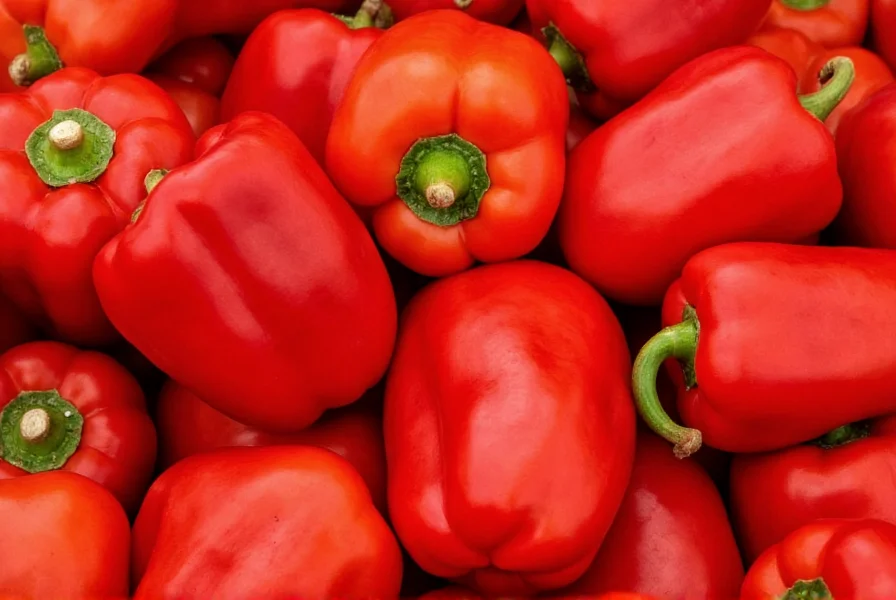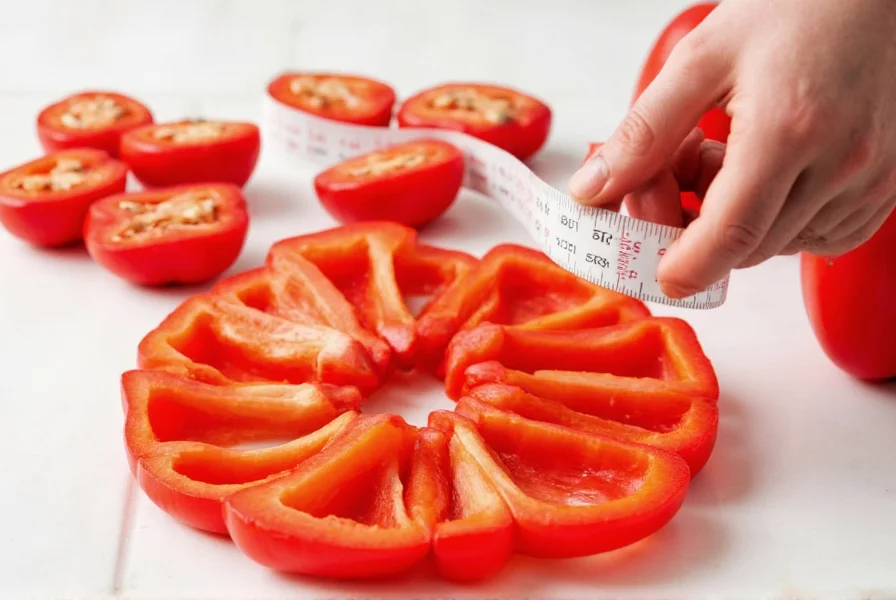Understanding red pepper calories is essential for anyone tracking their nutritional intake. Whether you're following a weight management plan, building balanced meals, or simply curious about this colorful vegetable's nutritional profile, knowing the precise calorie content helps make informed dietary choices.
Red Bell Pepper Calorie Breakdown by Size
The calorie count in red peppers varies based on size and preparation method. Unlike processed foods, fresh vegetables like bell peppers maintain consistent nutritional profiles regardless of brand or growing conditions.
| Red Bell Pepper Size | Weight (grams) | Calories | Carbohydrates (g) |
|---|---|---|---|
| Extra Small | 74g | 23 | 5.3 |
| Small | 92g | 29 | 6.6 |
| Medium | 119g | 37 | 8.5 |
| Large | 166g | 52 | 11.8 |
| Extra Large | 214g | 67 | 15.3 |
Nutritional Value Beyond Calories
While tracking red pepper calories matters for dietary planning, the nutritional density of this vegetable offers benefits that extend far beyond its low energy content. Red bell peppers represent the mature version of green peppers, developing sweeter flavor and enhanced nutrient profile as they ripen.
A medium red bell pepper delivers:
- Vitamin C: 158% of daily value (95mg) - significantly more than citrus fruits
- Vitamin A: 20% of daily value (183mcg) in the form of beta-carotene
- Fiber: 2.5g (9% of daily value) supporting digestive health
- Vitamin B6: 12% of daily value
- Vitamin E: 6% of daily value
- Potassium: 7% of daily value

Red Pepper Calories Compared to Other Vegetables
When evaluating red bell pepper calorie content, context matters. How does this popular vegetable compare to others in the same category?
| Vegetable (100g) | Calories | Carbohydrates (g) | Fiber (g) |
|---|---|---|---|
| Red Bell Pepper | 31 | 6.0 | 2.1 |
| Green Bell Pepper | 20 | 4.6 | 1.7 |
| Cucumber | 15 | 3.6 | 0.5 |
| Carrots | 41 | 9.6 | 2.8 |
| Broccoli | 34 | 7.0 | 2.6 |
While green peppers contain slightly fewer calories than their red counterparts, red bell peppers offer significantly higher concentrations of vitamins A and C due to their extended time on the vine. This makes red peppers nutritionally superior despite the marginal calorie difference.
Why Red Pepper Calorie Information Matters for Healthy Eating
The relationship between red pepper calories and nutritional density represents what nutrition scientists call "calorie efficiency" - getting maximum nutrients for minimal calories. This concept proves particularly valuable for individuals managing weight or seeking optimal nutrition.
Unlike empty-calorie foods that provide energy without nutrients, red bell peppers deliver substantial vitamins, antioxidants, and fiber with very few calories. The capsaicinoids present in peppers (though less concentrated than in hot peppers) may also provide mild metabolic benefits.

Practical Applications: Using Red Pepper Calories in Meal Planning
Understanding red bell pepper calorie content allows for precise meal planning. Here's how to incorporate this knowledge practically:
- Salads: Add one medium sliced red pepper (37 calories) to boost flavor and nutrition without significantly increasing calorie count
- Stir-fries: Use 1 cup chopped red pepper (30 calories) as a colorful, low-calorie base
- Stuffed peppers: Use large red peppers (52 calories each) as edible containers for lean protein fillings
- Snacking: Enjoy raw red pepper strips (23 calories for small pepper) with hummus for a balanced snack
When tracking red bell pepper calories for dietary purposes, remember that cooking methods affect the final count. Roasting or grilling adds minimal calories, while frying in oil significantly increases the energy content.
Common Misconceptions About Red Pepper Calories
Several myths persist about vegetable calories that deserve clarification:
- Myth: All colored peppers have identical calorie counts
Fact: Red, yellow, and orange peppers contain slightly more calories than green peppers due to higher sugar content from ripening - Myth: Removing seeds significantly reduces calories
Fact: Seeds and membranes contain negligible calories - the difference is insignificant for tracking purposes - Myth: Organic red peppers have fewer calories
Fact: Growing method doesn't affect basic nutritional composition including calorie count
Red Pepper Nutrition: Beyond Basic Calories
The true value of red bell peppers extends far beyond their calorie content. These vibrant vegetables contain powerful antioxidants like lycopene and beta-carotene that provide numerous health benefits:
- Supports immune function through high vitamin C content
- Promotes eye health with carotenoids like lutein and zeaxanthin
- May reduce inflammation due to antioxidant compounds
- Supports skin health through collagen production stimulation
- Aids in iron absorption when consumed with plant-based iron sources
When evaluating red pepper nutrition facts, remember that the calorie-to-nutrient ratio makes them exceptionally valuable for health-focused diets. Their natural sweetness satisfies cravings without added sugars, making them ideal for those monitoring both calories and overall diet quality.
Frequently Asked Questions About Red Pepper Calories
How many calories are in a whole red bell pepper?
A medium whole red bell pepper (approximately 119g) contains about 37 calories. The exact count varies by size: small peppers (92g) have 29 calories, while large peppers (166g) contain 52 calories.
Are red peppers good for weight loss?
Yes, red bell peppers are excellent for weight loss diets. With only 31 calories per 100g and high fiber content, they provide volume and nutrients with minimal calories. Their natural sweetness can satisfy sugar cravings without adding significant calories to your daily intake.
Do red peppers have more calories than green peppers?
Yes, red bell peppers contain slightly more calories than green peppers. A 100g serving of red pepper has about 31 calories compared to 20 calories for the same amount of green pepper. This difference occurs because red peppers are fully ripened and contain more natural sugars, which also makes them sweeter and more nutrient-dense.
How do cooking methods affect red pepper calories?
Basic cooking methods like roasting, grilling, or steaming don't significantly change red pepper calories. However, frying adds substantial calories from oil absorption. Adding sauces or dressings also increases the calorie count. For accurate red pepper calories tracking, account for any added ingredients beyond the pepper itself.
What is the carbohydrate content in red bell peppers?
A medium red bell pepper (119g) contains approximately 8.5 grams of carbohydrates, of which 2.5 grams are dietary fiber. This means the net carbs (total carbs minus fiber) are about 6 grams. The natural sugars in red peppers account for roughly 5 grams of the total carbohydrate content.











 浙公网安备
33010002000092号
浙公网安备
33010002000092号 浙B2-20120091-4
浙B2-20120091-4